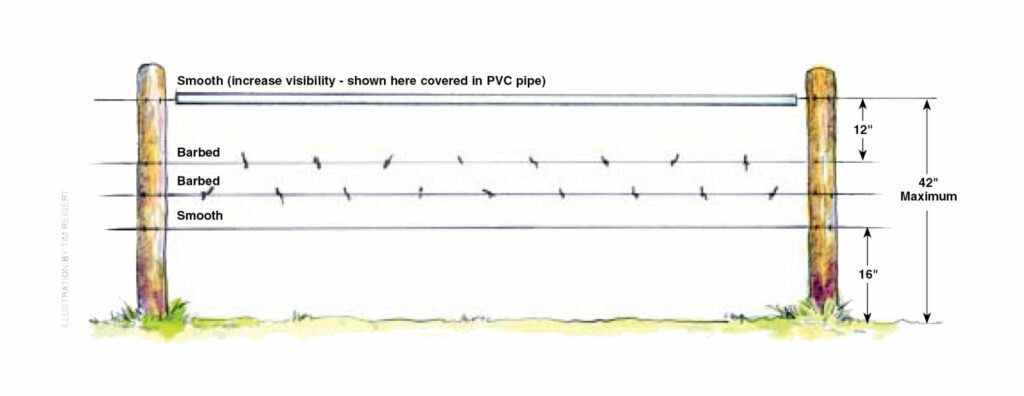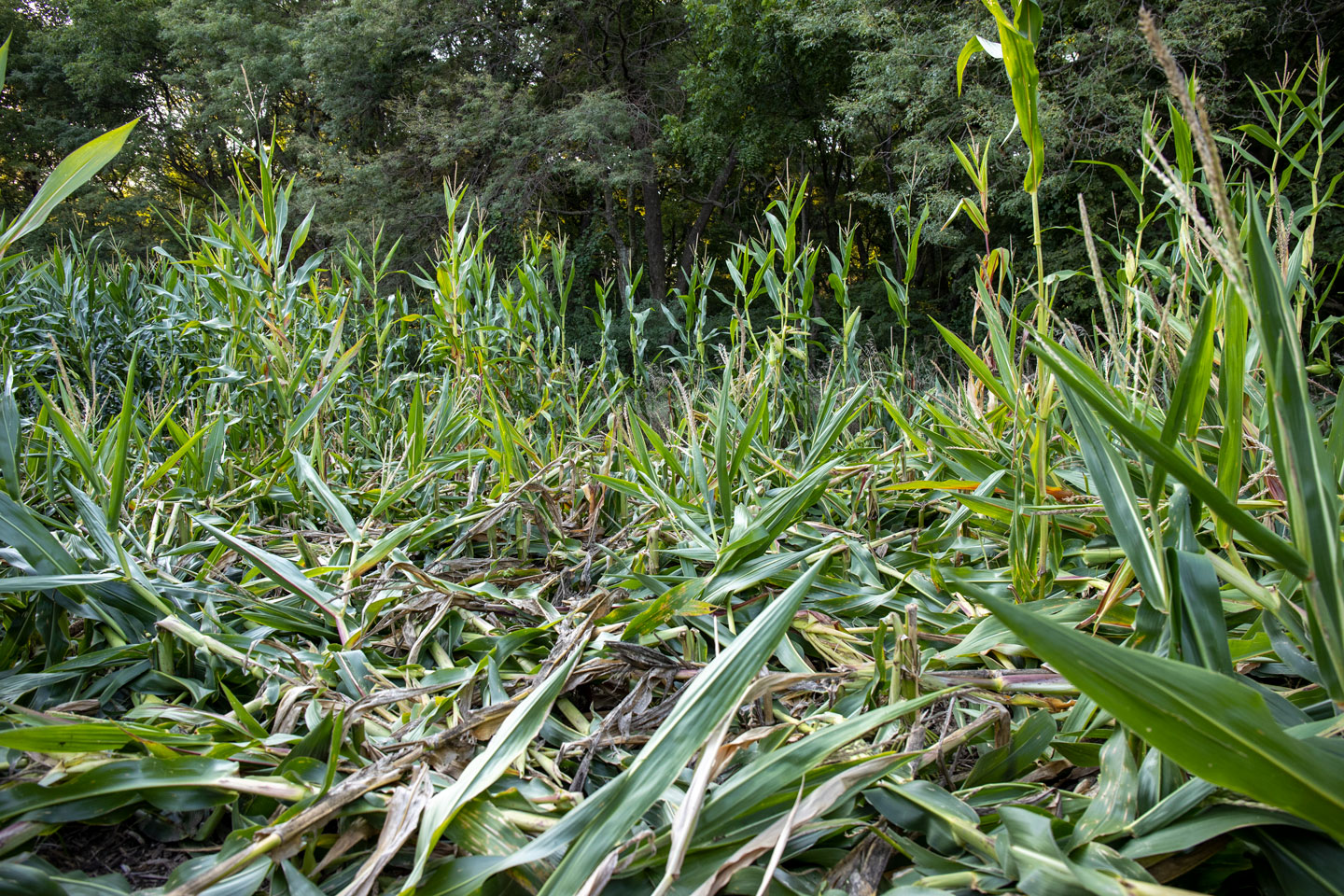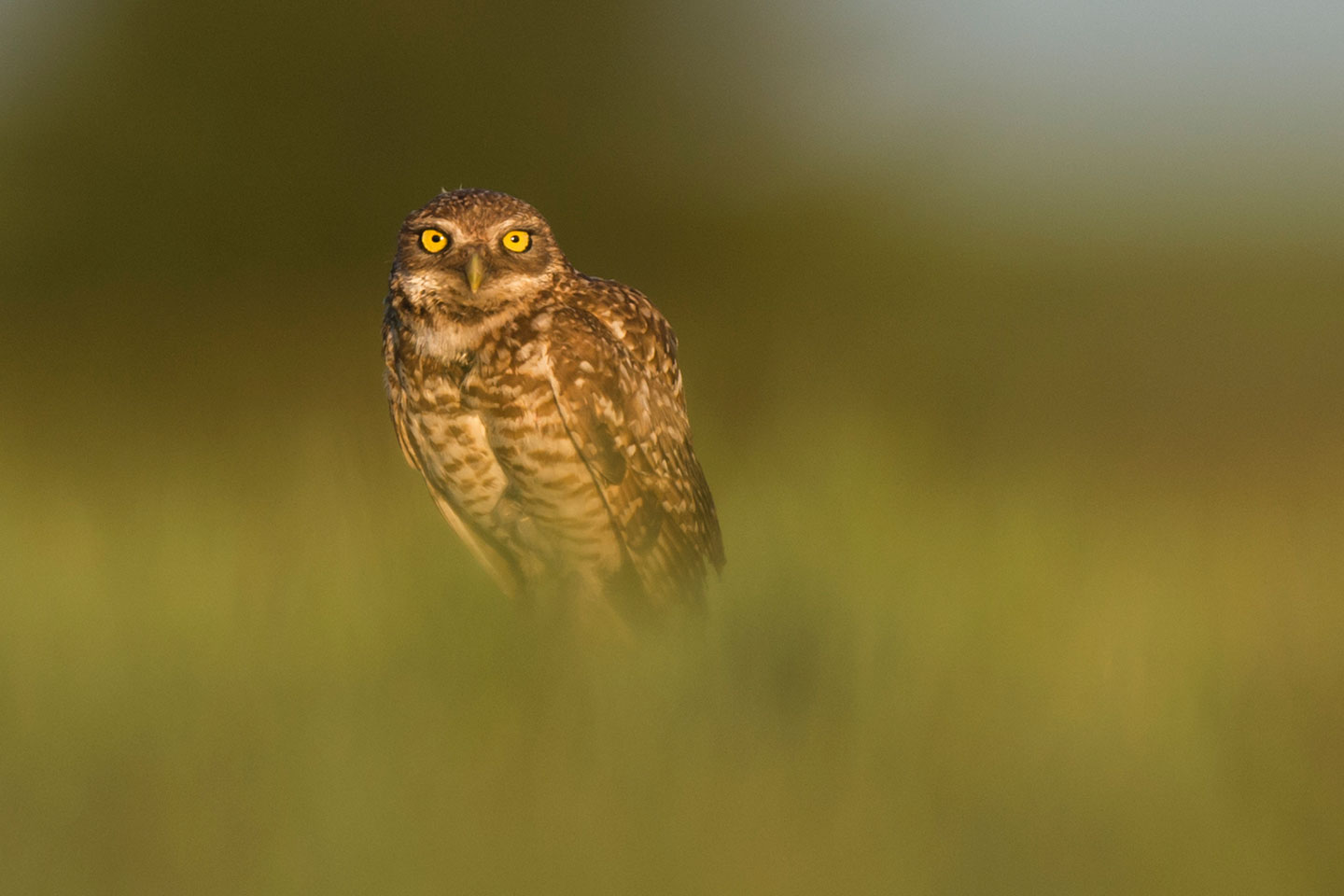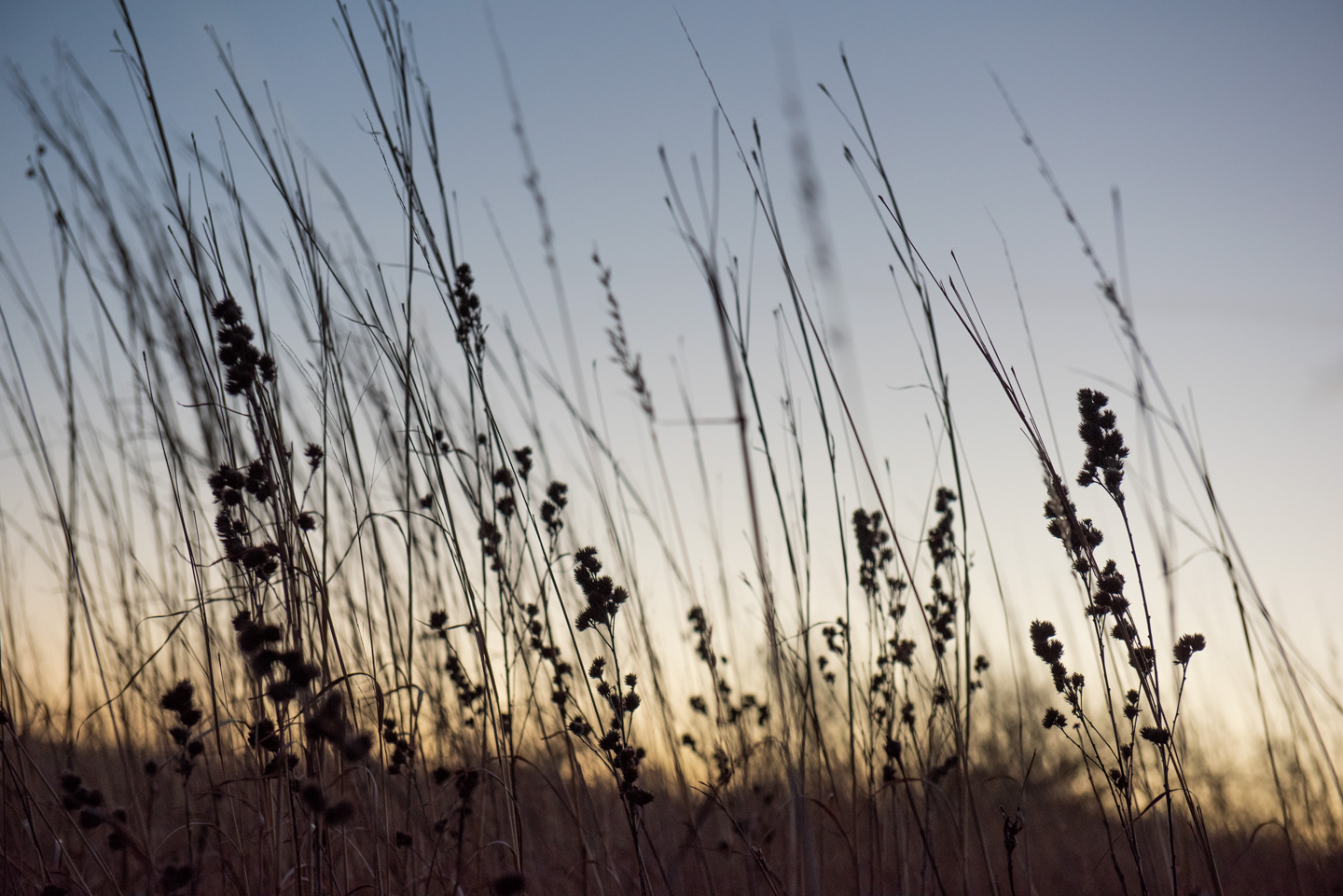Wildlife-friendly fences

A “wildlife-friendly fence” gives big game animals a better chance at moving between areas without harm or excess spent energy. It also results in fewer maintenance costs for landowners. If a fence is designed with wildlife movement in mind, big animals are less likely to damage the fences.
While there is no one-size-fits-all answer when it comes to constructing wildlife-friendly fence, Game and Parks does have some recommendations. Keep in mind, what is best in one area may not work as well in another, so adapting to your environment is important.
Recommended fence design
The following fence design allows for wildlife movements.
- A smooth bottom wire should be 16-18 inches from the ground, space enough to allow pronghorn to follow their instincts to crawl under.
- The top wire should be placed at about 40 inches high, a jumpable height for most big game animals. Maximize visibility by tying flags to the top wire or using PVC pipe in areas where animals are known to move frequently. Deer and elk have poor depth perception, and so are more likely to see the PVC pipe, as are birds, including night-flying raptors.
- The fence has just one or two middle wires, placed at least 1 foot below the top to reduce chances of snaring the legs during a jump.
- Make sure all wires are tight. Loose wires are more likely to wrap around wildlife and livestock, resulting in their ultimate death.
Considerations
Wildlife safety is just one consideration to building a fence. Along roads with high traffic, for instance, it might be wise to put the barbed wire on the bottom instead of smooth for human safety. Or, if the road is really busy, a tall woven wire fence that directs animals to underpasses may be best.
Other things to consider:
- A tall fence is not necessarily better for managing elk movement. A shorter fence may trigger the animals to jump over it instead of charging through or leaning against it.
- For fences designed with elk movements in mind, braided cable instead of single-strand wire at the top of a fence will withstand better a collision with an elk’s hind legs.
- A well-constructed fence of the design recommended above should hold cattle. Even if a calf makes its way under the fence, it usually will return to its mother without much trouble.
More info
For tips on building wildlife-friendly fence, contact a Nebraska Game and Parks Commission district wildlife office, a nearby USDA Natural Resources Conservation Services center, or a variety of conservation organizations.



